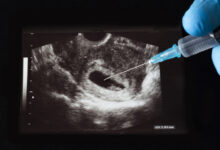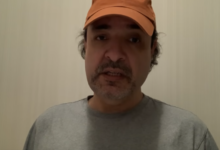
The world was shocked after Islamist terrorists, several wearing suicide vests, seized a crowded venue
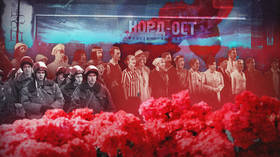
© RT
Back in 2002, Russia was conducting a painful counter-terrorism operation in Chechnya. Despite all the problems inherited from the Soviet Army, the country’s soldiers of that time were efficient in open battles. However, they were now mired in slow, seemingly endless counter-guerrilla operations in a republic covered with mountains and forests.
Ambushes, bombings, and raids came one after another in an endless carousel of attacks. Explosions could constantly be heard thundering in southern Russia, as homemade bombs set off in crowded places sometimes claimed dozens of lives at a time. To make matters worse, the Islamists had now move onto suicide bombing.
The apogee of these methods was the hostage-taking that occurred exactly 20 years ago in the Dubrovka Theater in Moscow. After more than a hundred people ultimately perished in the ‘Nord-Ost’ attack, any notion of dealing with the terrorists through negotiation was completely ruled out, and society braced itself for an uncompromising struggle.
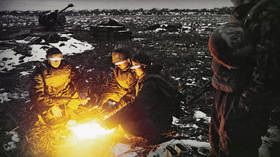
Read more
Suicide Squad
The Caucasian terrorist underground quickly adopted the suicide tactics used in the Middle East. In Chechnya it was mostly girls who were sent to their deaths. The candidates were groomed, as they usually are in totalitarian religious sects: the girl becomes inspired by the idea that she is a ‘chosen one’ who will soon ascend to heaven to find bliss in the company of men who have also died in the name of faith.
The terrorists enlisted mostly poorly educated girls from mountain villages who had grown up in a rigidly patriarchal society. Many of these suffered from serious mental health issues, and recruits were also generally doped up with tranquilizers. The preparation of a suicide bomber sometimes included sexual violence – according to the rigid concepts at play, a woman had no future in this life and she could only seek happiness in the next world. After entering this system, instances in which the drafted suicide bombers survived were extremely rare. In fact, you could count them on your fingers.
Chechnya’s most authoritative and odious militant leader, Shamil Basayev, created a special group called Riyad-us Saliheen to organize terrorist attacks, and suicide bombings in particular. It was made up of a small, permanent core of groomers, but ordinary participants were rapidly squandered, disappearing in the flames of explosions.
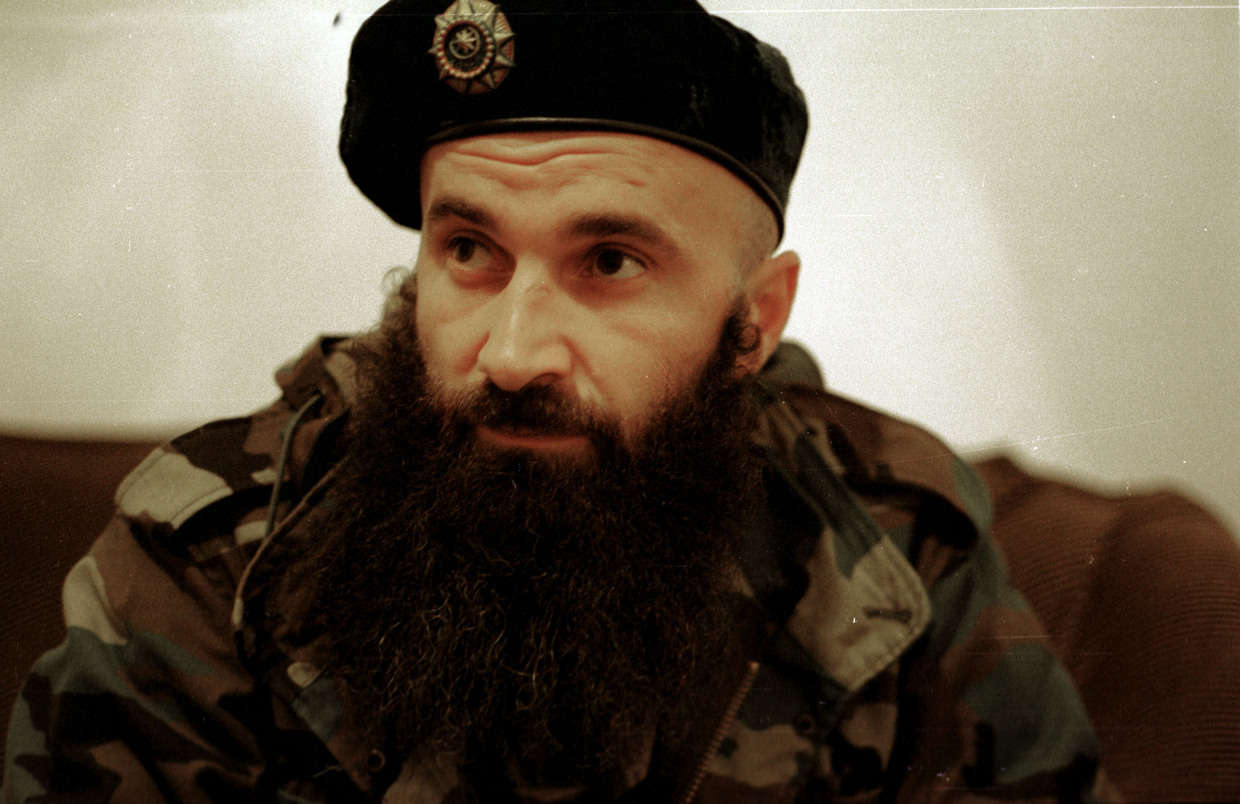
Shamil Basayev © Global Look Press / Robert King
Despite all this violent creativity, the terrorists’ situation was difficult. They were gradually losing the guerrilla war, as their ranks were reduced and small detachments disintegrated completely. The only way they could win was to commit terrorist acts to psychologically break the authorities and induce Moscow to negotiate with their leaders. Two people played a key role in this new campaign. Basayev was a recognized terrorist leader who’d organized the Chechen militants’ largest successful mass hostage-taking in Budyonnovsk in 1995.
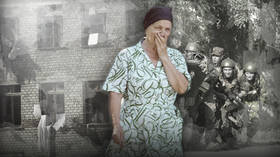
Read more
At that time, Russia met their demands, which allowed the militants to save their movement from collapse. Now, Basayev’s evil genius was needed to plan an even more grandiose attack. Another important figure was Aslan Maskhadov, who was considered to be a ‘moderate’ commander.
He was needed so that Russia would have someone acceptable to negotiate a ceasefire with. Without Maskhadov, Basayev was just a bloody, senseless thug. Conversely, without Basayev, Maskhadov was a powerless king without a kingdom, who would be unable to force negotiations on Moscow.
Basayev organized a large detachment for terrorist attacks. It included 44 people, including 22 suicide bombers. The group was headed by Movsar Barayev, the nephew of Arbi Barayev, a top field commander and pathological sadist, who had organized training for suicide bombers in Chechnya along with Basayev and even sent his own relative, Khava, on a suicide mission as one of the first ‘martyrs.’ Arbi had already been killed during a special operation conducted by Russia, and now his nephew was planning to surpass his uncle.
However, though Movsar Barayev had ambition, he lacked charisma and intelligence. He intended to emerge as an authoritative commander, but Basayev put him at the head of the squad precisely because he considered him to be an expendable youngster.

Movsar Barayev © Wikipedia
The rest of the squad consisted of the same kind of people. Half were female suicide bombers, and most of the men were 20-23 years old. There were only a few real fanatics who knew they were going to perish and were prepared to die for the cause. One of these was Ruslan Elmurzaev, who was supposed to look after Movsar Barayev. The contingent’s weapons were mainly Kalashnikov assault rifles and grenades, while the suicide bombers’ tools were the explosives attached to their bodies, as well as pistols.
Preparing a Tragedy
Read more
On the evening of October 23, 2002, Moscow journalist Alexandra Koroleva was attending a musical called Nord-Ost at the Moscow Theater on Dubrovka, a show based on a Soviet adventure novel. Luckily, as it turned out, she was feeling ill and had to leave after the first act. The lobby was full of people and the atmosphere was festive and relaxed, but a nasty autumn rain was pouring down outside. Alexandra arrived home chilled, poured herself a cup of tea, turned on the radio, and learned that she’d cheated death by about ten minutes – the theater had been seized by heavily armed terrorists.
A large theater was a good target for the militants. A closed room without windows in which hundreds of people were gathered was an ideal venue from the assailants’ point of view. Barayev’s agents in Moscow had inspected several buildings. They had initially planned to seize the Bolshoi Theater, but this was rejected as it was too well guarded. But they liked the Theater Center on Dubrovka, as Nord-Ost had become a hot ticket in Moscow and there were always a lot of people at the performances.
The militants came to the capital in small groups and settled in safe houses, while their weapons were delivered separately. The leaders attended the show several times to study the building and assess the security (which was nearly non-existent).
On the evening of October 23, the terrorists drove up to the theater in minibuses when the second act was just beginning.
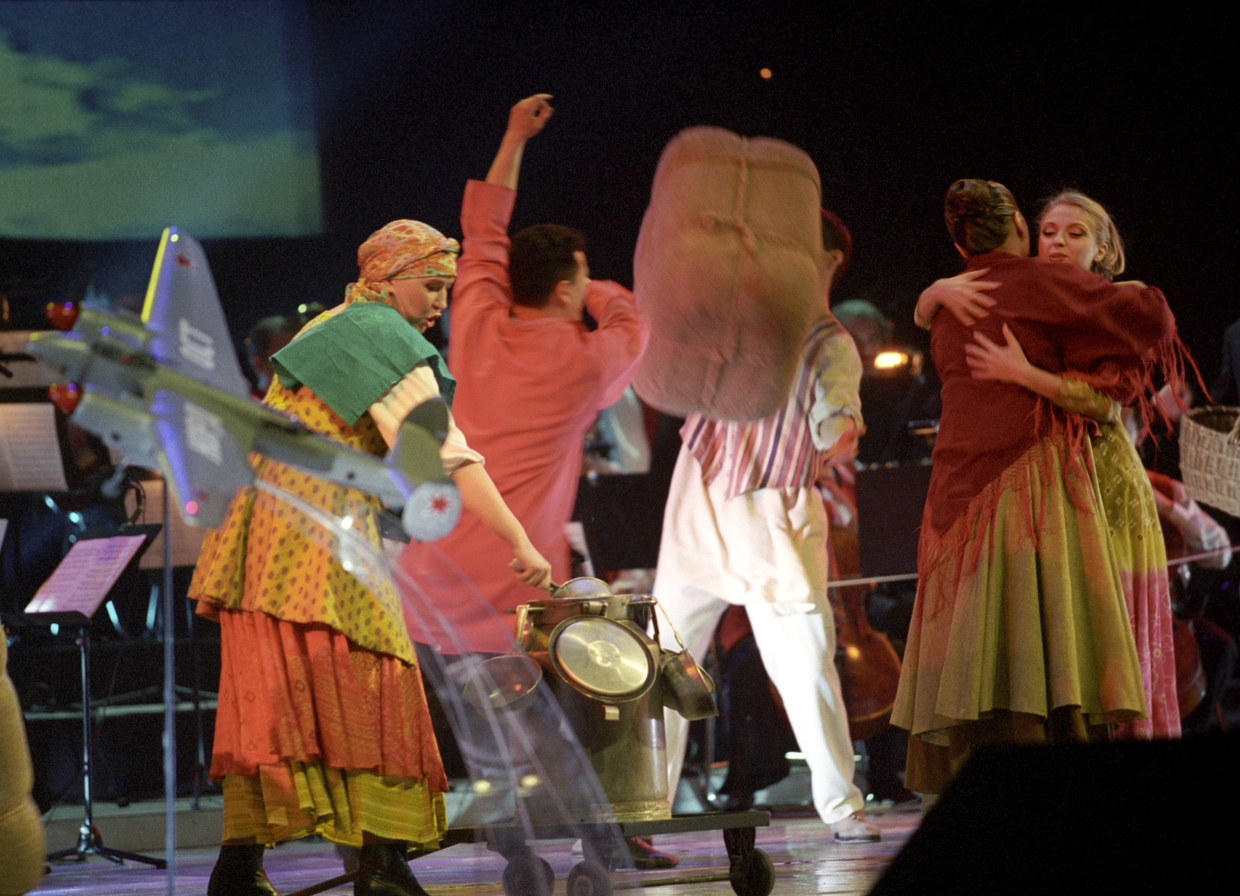
Scene from musical Nord Ost based on Veniamin Kaverin’s novel ‘The two capitans.’ © Sputnik / Vladimir Vyatkin
At first, the audience mistook the people in camouflage for an element in the show. But then the actors were thrown off the stage and several bursts of gunfire raked the ceiling, among screams of ‘This is a seizure!’ The clueless spectators were beaten with machine-gun butts, while the few guards, armed only with gas pistols, were easily neutralized.
The terrorists carried out their plan smoothly and efficiently. Twenty-two female terrorists spread out throughout the hall, each with a belt laden with bombs consisting of plastic explosives, nails, screws, and ball bearings. The belts were activated manually – to do this, you had to insert a battery and close the terminals. Two bombs made from powerful artillery shells were also placed in the hall – one in the center, and the other on the balcony.
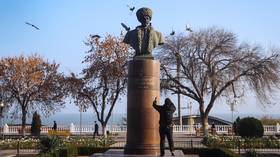
Read more
Several smaller bombs were planted around the hall as well. The blast zones of the various devices overlapped, so that a single explosion would hit everyone in the hall, while bringing down the theater’s high ceiling at the same time.
The 916 people inside were now in the hands of the terrorists.
The Hostages
In the confusion of the first few minutes, many were able to call home and contact their families. One man, who happened to be an FSB operative, managed to hold on to his phone and exchanged text messages with his comrades outside the theater for quite a while. He was later found dead. A woman from the audience recalled phoning her husband and struggling to explain what was happening – it just felt surreal, too absurd to be true. While the experience was traumatic for everyone, it was especially horrifying for a lone Chechen woman in the audience: she was scared of being identified and executed for the ‘betrayal’ of having come to the same theater as the Russians.
The Dubrovka Theater is a large building with a complicated interior layout. Because of that, many were able to evade the terrorists roaming through the long corridors and escape. Several theater employees reached one of the windows, tied their clothes together to form a rope and climbed down; one of them fell down but survived, with just a broken leg. Seven theater technicians locked themselves in the shop area. Operatives of an EMERCOM team that arrived on the scene risked their lives to quickly and quietly saw through window bars and get them out. A few more were rescued from the second floor using a ladder brought to the back of the building. One employee found a small utility room, locked herself in there, turned off the lights, and sat inside for the next three days, quiet as a mouse – one can only imagine what she went through.
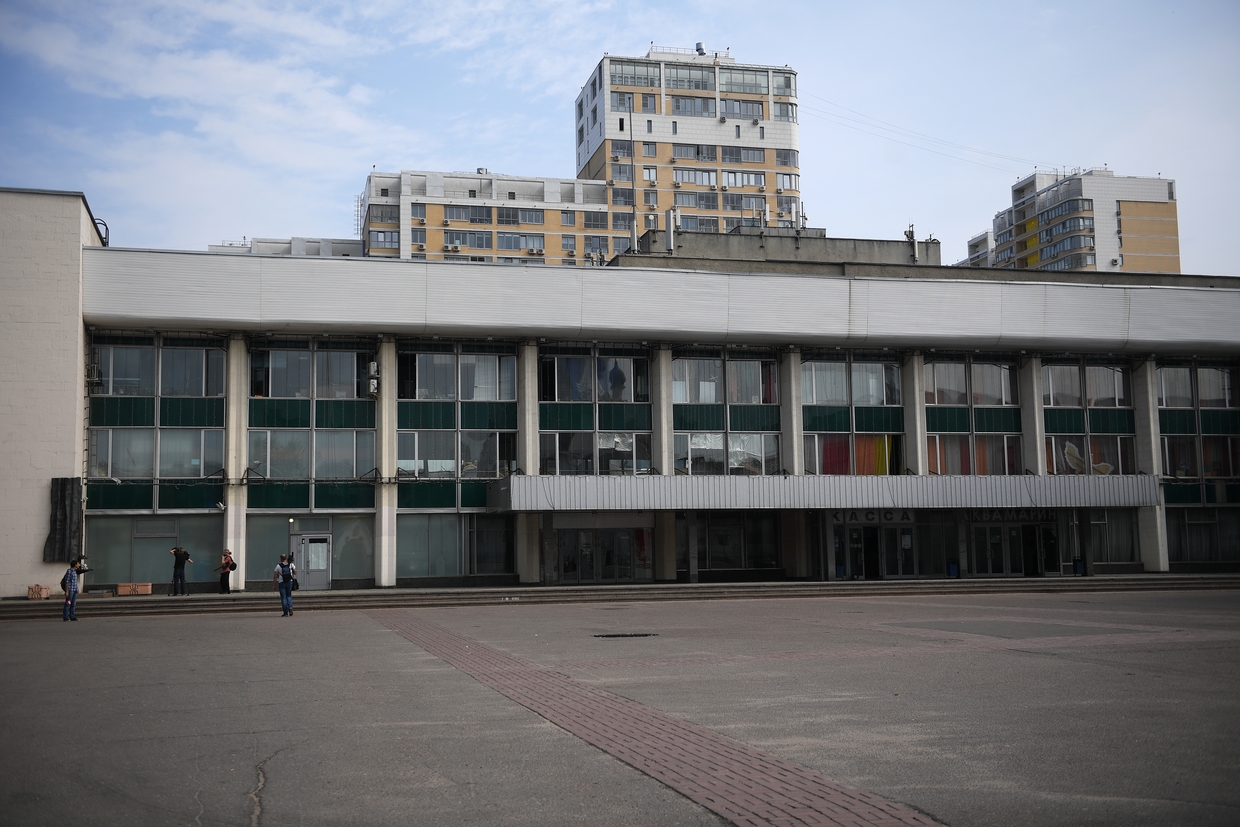
The building of the concert hall ‘Theater Center on Dubrovka’ in Moscow. © Sputnik / Vladimir Astapkovich
In the first few chaotic hours, before the terrorists could take control of the entire building and before a police cordon could be set up outside, many were able to escape, but this was also when some of the first tragedies occurred. Colonel Konstantin Vasilyev entered the building on his own: he believed he would be able to save at least some people by offering himself as a valuable hostage in exchange for women and children. He was shot by the terrorists.
A young woman named Olga Romanova followed an equally noble impulse, but suffered the same fate – after learning about the hostage situation, she went inside the theater and started to publicly shame Barayev and his men. Such a genuine outburst might have worked in a novel, but not in reality. The terrorists simply murdered her.
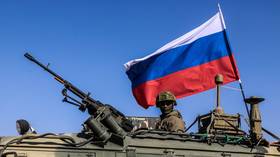
Read more
There was one hostage in the main hall whose presence was, ironically, a stroke of luck for many. Georgy Vasiliev was one of the authors of the musical. He had a chance to escape but, feeling a personal responsibility for the events, chose not to. This proved to be a right decision. Vasiliev later recalled:
“Almost immediately, we had serious problems. For example, the terrorists suddenly noticed that there was thick smoke coming out of the big, heavy objects they’d used to barricade the stage doors with, and they didn’t know what these were. These were fog machines. The terrorists had no choice but to turn to the hostages and ask if anyone knew what to do with these. Fortunately, I was there and knew what to do. In fact, I think my being there helped avoid many dangerous situations. What happened next proved it was possible to get some concessions out of the militants. The optical filters started to smoke and catch fire. The computer used to control the lights wasn’t responding and the filters were not designed for such a long exposure to powerful stage lights. There was a smell of burning plastic, people were frightened. The terrorists tried to act cool at first, but I explained to them what a terrifying trap we would all be in should a fire break out in the theater. I told them they would not even have time to make their political demands and would be dead in a matter of minutes, along with everyone else. Intimidated by this scenario, they agreed to give me some radios, so I was able to get in touch with my people inside the theater, and for a while I even managed to stay in contact with those outside. For example, I got in touch with our technical director Andrei Yalovich, who was outside of the building. He did a lot to help free the hostages. I could talk about these episodes for a very long time – those three days were full of situations like this.”
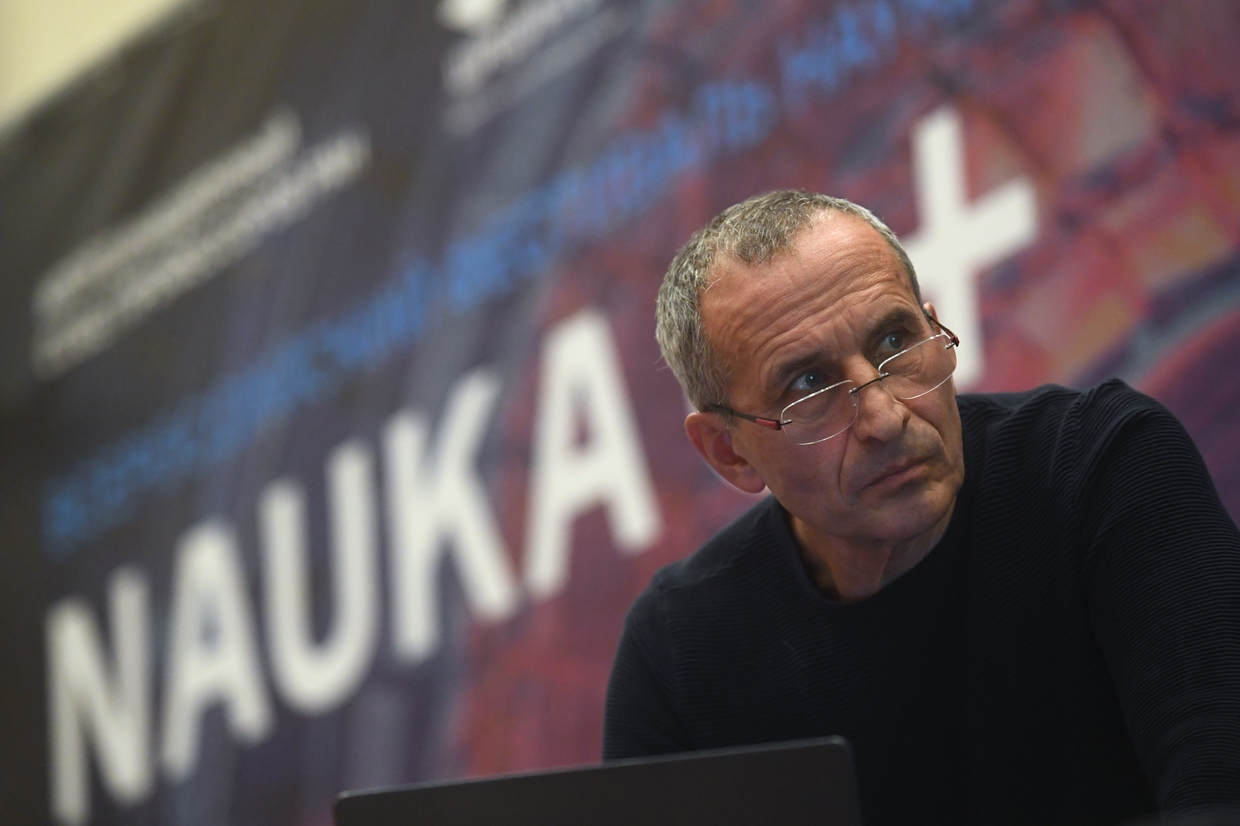
Georgy Vasiliev © Sputnik / Kirill Kallinikov
Negotiation attempts
Meanwhile, Barayev began his bloody performance in collaboration with others outside the theater. The terrorist ideologue Movladi Udugov was immediately interviewed by the BBC. He talked about the good intentions of the terrorists, who wanted to stop the war. They understood the importance of media engagement. Controlled phone calls of hostages were organized in attempts to reach out to journalists and organize demonstrations in support of their demands to end hostilities and withdraw troops from Chechnya.

Read more
Popular singer Iosif Kobzon was the first to talk to the terrorists. In the theater, the performer-turned-politician was accompanied by Sunday Times correspondent Mark Franchetti. Basayev threatened to blow the building with hostages inside if his demands weren’t met within a week. Kobzon talked to the group’s leaders and negotiated the first favor – he took with him a woman with two children and another baby she passed as her own, deceiving the terrorists.
During an interview, Barayev blurted out that the attack was a joint operation of Basayev and Maskhadov. Later he talked about this in detail, leaving no room for ambiguity. This wasn’t exactly pleasant for Maskhadov who had an image in the West as a ‘reasonable’ leader. The slip up, however, was quickly forgotten beneath the torrent of unfolding events.
The government tried to engage as many VIPs as they could in the negotiations. At different times, a few other politicians, including opposition members, entered the concert hall after Kobzon, children’s doctor Leonid Roshal and the Jordanian doctor Anwar Al-Said. Roshal was in jeopardy when he was talking to terrorists. Two girls asked for permission to go to toilet and escaped through a window. A brief gunfight erupted, during which a major of the Alfa unit had to leave cover to draw enemy fire. He was wounded but managed to wound a terrorist in return, covering the escape. Barayev was furious and threatened to shoot the doctor, but grew softer when Roshal bandaged the wounded fighter, and let the doctor treat other hostages. And not a moment too soon – many were in critical condition.
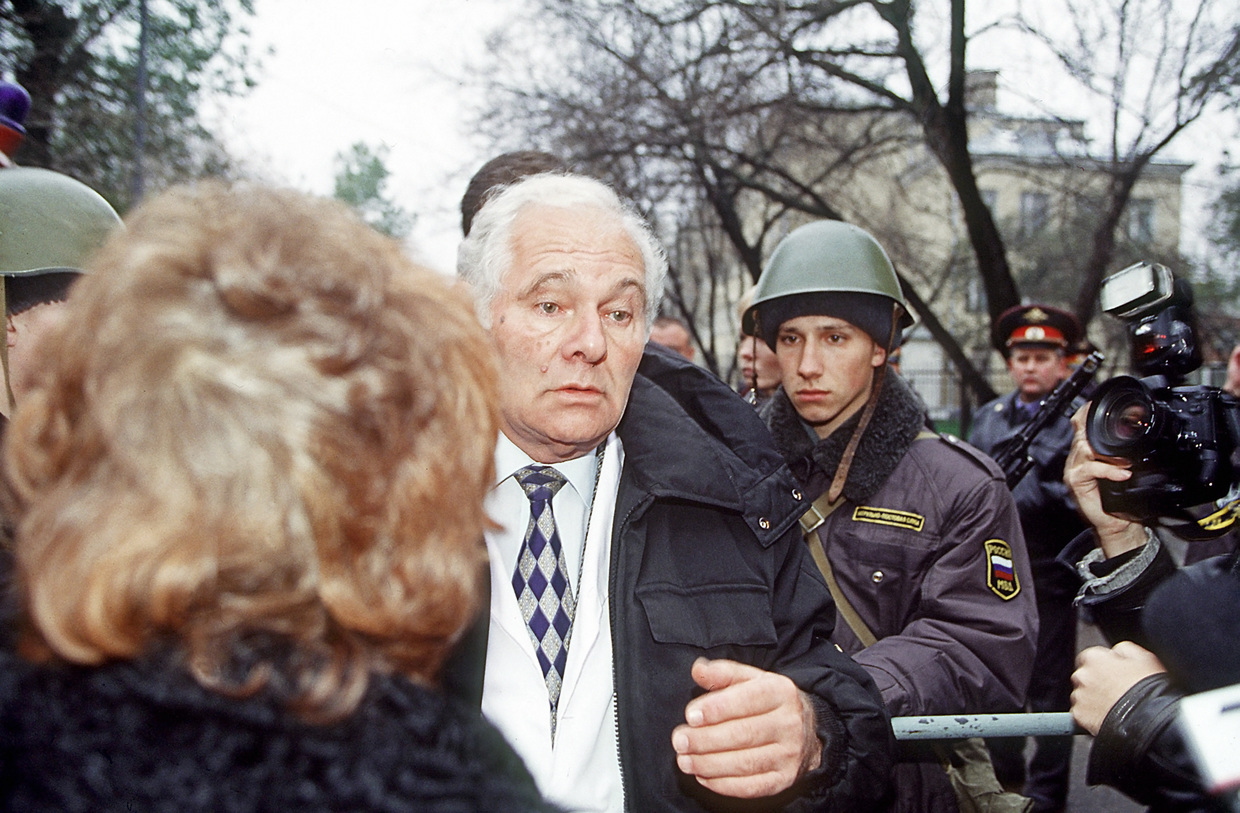
Leonid Roshal, head of the Moscow Emergency Surgery Research Institute, telling journalists how they provided medical help to the hostages in the Theater Center on Dubrovka. © Sputnik / Vladimir Vyatkin
At the same time, the authorities were planning an assault. The opportunity for negotiations was exhausted and any continuation of the siege likely meant death for the hostages. The FSB was also concerned the terrorists may have lost their nerve, as the siege was taxing for them as well. Special counter-terrorist units Alfa and Vympel, formed back in Soviet times, had to lead the charge.
Security forces found a theater of a similar design to use as a training ground before the assault. The positions of the terrorists inside the building were scouted quite well; while tunnels under the theater were analyzed.
.
Hellish surrealism
For the hostages, things were very hard right from the start. The terrorists did not allow them to be fed and gave them very little water. People were dehydrated. And sitting in a chair without standing up for a long period of time was an intense physical stress.
A particularly macabre element of the siege was the idea to use the orchestra pit as the toilet. Obviously, it was extremely degrading, especially for women, who had to use it while being watched by the terrorists, who were all men. But with nearly a thousand people in the hall, the pit quickly turned into a stinking cesspool, poisoning the air in the closed space. At some point, it almost led to a fire. It happened after Vasiliev suggested putting some lamps on music stands to light the way so that people could at least avoid stepping in the fecal matter. One of the power extension cords short-circuited, and the music sheets and cables caught fire. Head of the electrical department Alexander Fedyakin, who was among the hostages, saved the day by quickly putting the fire out with a fire extinguisher he grabbed off the wall.
The terrorists cranked up the atmosphere of hellish surrealism by praying on stage, putting on religious songs and firing in the air. A hostage recalled that songs in Arabic and in Chechen felt better than those sung in Russian: if you understood the lyrics – urging to cleanse Jerusalem from infidels, for example – everything started feeling too surreal.
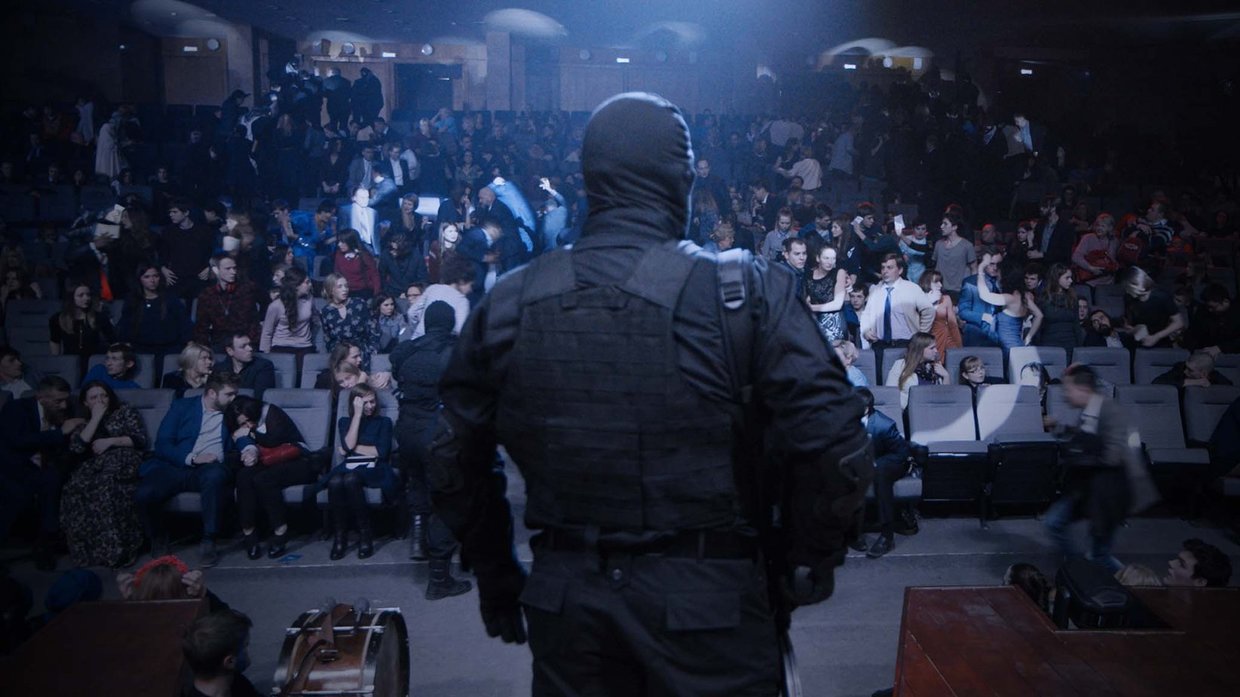
‘The last test’ (2019) Dir: Alexey Petrukhin © Russian film group, Startfilm
The hostages were on the brink of collapse. Over three days, they had about 400 milliliters of water each, and the miasma from the orchestra pit caused heavy physical suffering, even for those who were a dozen rows away.
Assault operation
In the early hours of October 26, one of the hostages lost it completely. He ran through the hall. The terrorists opened fire and another hostage was killed.
At that moment, the officers of the Alpha and Vympel groups were already on their way to the auditorium. 180 officers took part in the operation.
The terrorists were unable to control the entire perimeter of the building due to its considerable length. Besides, the female suicide bombers were confined to the audience hall where they stayed all the time, and the remaining 22 men were a small force. This allowed the special operations forces to advance unnoticed.
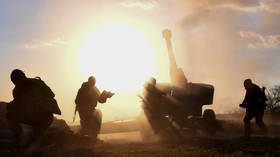
Read more
The first group of Alpha fighters entered the building though a gay bar adjacent to the theater. Once inside, they regrouped in preparation for the assault. Another unit entered the building from the basement, guided by local urban explorers.
And it was then that a decision was made that, to this day, is deemed to be the most controversial part of the assault plan.
The manner in which mines and explosive devices had been placed throughout the auditorium made the option of a successful storming operation seemingly impossible. Therefore, it was decided to use a fentanyl-based soporific gas. This plan offered hope that the terrorists would not have time to blow up the building. However, it also meant imminent death for some of the hostages kept there. The effect of soporific gas on people can be very different, not to mention the additional dimension of the hostages’ mental and emotional exhaustion. Those who planned the assault operation believed this was the only way to go – the terrorists had to be put to sleep or weakened, at least some of them, otherwise the building would be blown up, claiming the lives of everyone locked inside.
The gas was pumped into the theater’s ventilation system. One of the assault groups intentionally revealed itself at the building’s façade to divert the terrorists’ attention from the hostages.
After that, the situation developed rapidly.

Russian special forces storm early 26 October 2002 the Dubrovka theater building in Moscow, where Chechen separatists were holding some 700 theatre-goers hostage since 23 October. © Alexander NEMENOV / AFP
The male terrorists rushed to the façade from the audience hall. Another assault group stormed in from the basement. They were supposed to deal with the female bombers, which was the riskiest part of the whole operation. Some of these had already dozed off, others were confused and disoriented by the gas, just like most of the hostages. The Alpha officers had to act fast, as the bombers were seated side by side with the hostages. For the bombs to go off, they just needed to insert batteries into their suicide belts and join the wires. And some of the terrorists had already put the batteries in.

Read more
However, the Alpha fighters were fast and efficient, and none of the terrorists in the auditorium managed to open fire or detonate the bombs. Later, there were accusations against the special operations group that they should have taken the terrorists alive. However, it would have been deadly dangerous to move what amounted to ‘live bombs,’ therefore all the suicide bombers were killed on the spot, including those who were already asleep.
At the same time, a brief but intense fight unfolded outside the auditorium. The terrorists who had rushed to the building façade, where a feigned attack was staged, were killed by sniper fire. Movsar Barayev tried to shoot back from the room where he had spoken in front of the cameras, and was finally killed by a hand grenade one of the officers hurled into the room.
To the deep distress and anguish of the entire country, the outcome of the rescue operation proved to be less satisfactory than the military operation carried out at the Dubrovka Theater.
Tragic results
Much has been written about how paramedics had allegedly not been warned about what type of gas was used and what the hostages were suffering from. In reality, things were more complicated. There was poor coordination between the special forces, first responders, and doctors, which resulted in a brief moment of chaos and mix-ups during the evacuation. As a result, some hostages did not receive an antidote, while others were unlucky enough to get two doses, which could have been lethal. On top of that, many people were so dehydrated and had suffered so much during the siege that they died even if aid was administered correctly. And ambulances were too slow to arrive.
Previous terrorist attacks had shown that radio conversations could tip the criminals off that the building was going to be stormed, so, this time, paramedics were only told at the last moment to get to the Dubrovka Theater.
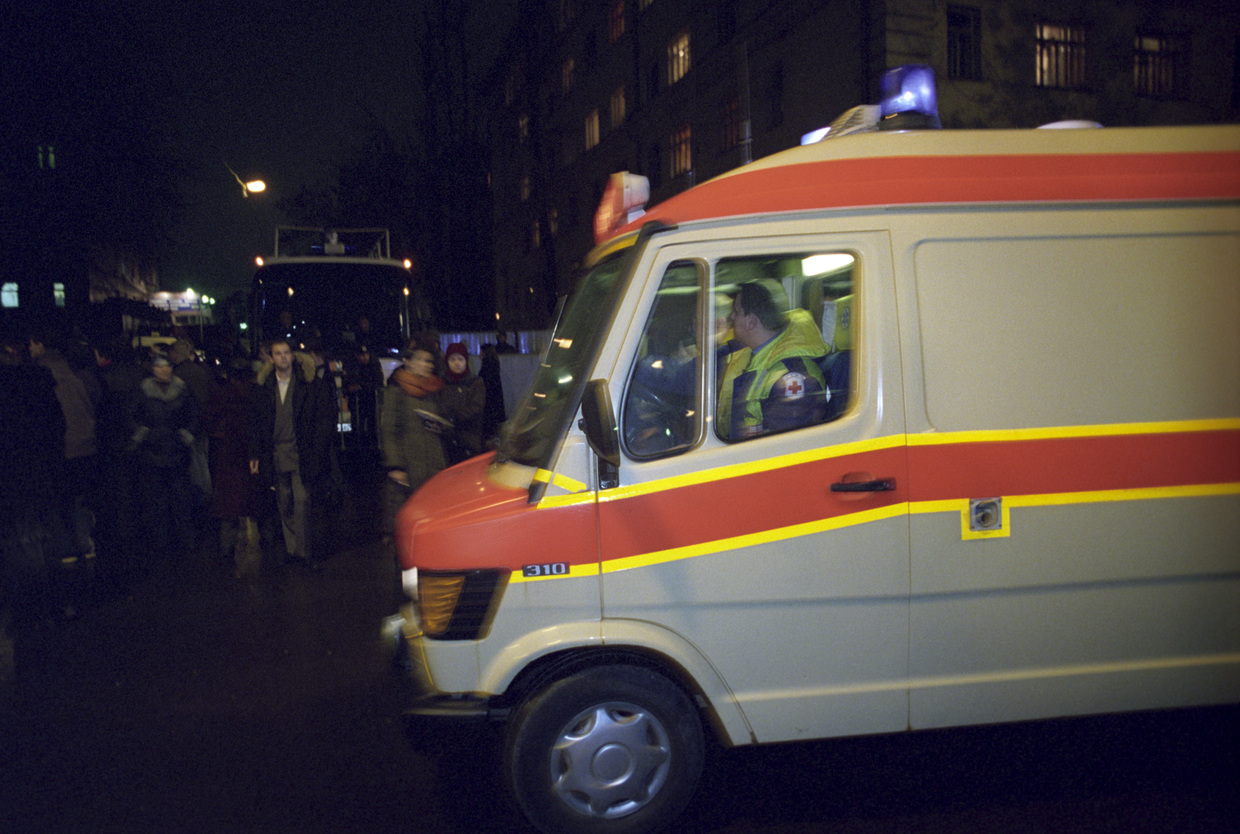
Terrorists have seized hostages during the Nord-Ost musical in the Dubrovka Theater Center. Ambulances waiting on Melnikov Street. © Sputnik / Alexander Polyakov
As a result, even though no hostages were killed during the assault, many died in the aftermath. The total death toll, including the hostages killed by the terrorists prior to the operation, rose to 130, with most deaths resulting from gas poisoning exacerbated by stress, dehydration, preexisting conditions, and days of extreme physical discomfort.
Almost immediately, observes pointed out that better coordination and more streamlined evacuation efforts would have saved many more lives. In his address to the nation dedicated to the Dubrovka Theater tragedy, President Vladimir Putin was frank:
We were not able to save everyone. Forgive us.
For Russians, the hostage crisis was in many ways a revelation about the country and its people.
Admittedly, there were many hard questions and unflattering answers about the management of the rescue operation. Yet there was also the other side of the coin. The terrorist gang was wiped out completely, and the worst-case scenario was averted, although there was a time when the building was just seconds away from total destruction.
People in the theater and society at large showed a lot of courage, stamina, and selflessness. Theater employees, who had never volunteered to be heroes, provided vital support to the hostages. Almost all politicians and public figures who participated in the negotiations did an exemplary job, even though they had different, oftentimes diametrically opposed, views and agendas. Granted, there were exceptions, and many were later angry with the journalists who showed Alfa commandoes on live television at the very start of the assault – a broadcast the terrorists might have been watching, too.
Other media figures, however, helped by participating in negotiations and helping get food and water to the hostages, who were also very supportive, helping each other get through those three days of hell.
The terrorist attack failed to force the federal government to negotiate with terrorists in the Caucasus.
The Dubrovka hostage crisis laid bare many of Russia’s weaknesses and was a devastating tragedy. However, it was also a time when the government and the public showed a level of courage and mutual support which broke new ground in the post-Soviet period.
By Evgeny Norin, a Russian historian focused on conflicts and international politics



